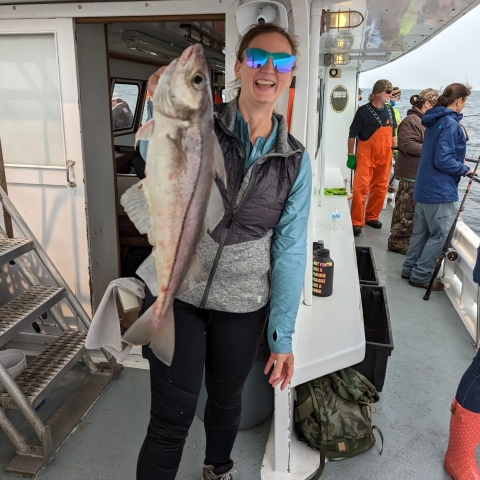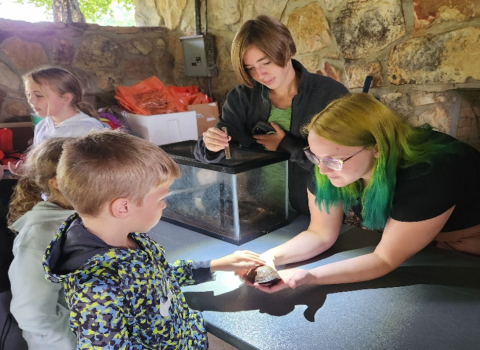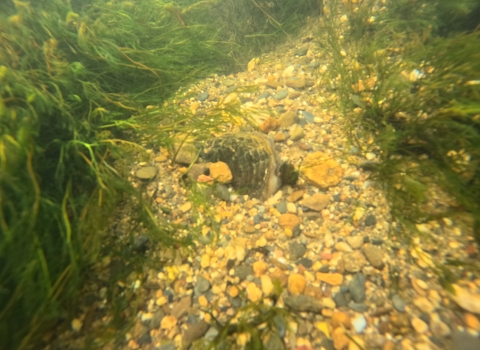How can women get comfortable spending time in nature? Through the Becoming an Outdoors Woman program. The U.S. Fish and Wildlife Service partners with state natural resource agencies to make it happen.
Hunting, fishing and the world of outdoor recreation isn’t for everyone , but with 77% of hunters identifying as male, outdoors women may feel theirs is a particularly solo journey. Learning a new activity can feel intimidating or even inaccessible, especially in male dominated activities where instructors may not understand special considerations for women related to instructional tips and safe, appropriate gear. The Becoming an Outdoors Woman (BOW) program takes aim at those challenges, helping women across the country learn to paddle, fish, hunt, shoot, forage and engage in other outdoor activities — together.
“Being outdoors and having a hands-on experience with nature is empowering,” says U.S. Fish and Wildlife Service Director Martha Williams, who recently participated in a program event in New Hampshire. “It’s inspiring that this program gives women the opportunity to build confidence and community while connecting with the outdoors in new and different ways.”
At the New Hampshire event, Secretary Haaland and Director Williams joined other women to experience learning opportunities available through the program. Neither had tried archery before, but with the help of instructors, they both enjoyed shooting a bow and arrow for the first time.
“Whether you are an established outdoor enthusiast or new to the outdoors, BOW provides many opportunities for women to connect with each other and with the natural world in new and different ways,” Williams said. “The Service is honored to support programming that teaches and empowers women as they pursue or advance their outdoor endeavors.”
The program’s success is thanks to the network of dedicated BOW instructors and the many volunteers who devote their time to sharing their knowledge and love of the outdoors with others. In many states, BOW program courses and instructor time are further supported by funding from the Service’s Office of Conservation Investment (formerly Wildlife and Sport Fish Restoration program). The funds help offset costs, making BOW courses more affordable and allowing more people to participate.
Whether participants are aspiring or avid outdoor enthusiasts, BOW instructors across the country are guiding the way, enabling all participants to learn while taking part in fun, skill-building outdoor experiences. States follow a national model that divides BOW program offerings into thirds: one-third of the workshops focus on hunting, target shooting or wildlife management; another third on boating, paddling, fishing or water activities; and the remainder on nature-based outdoor recreation such as birdwatching, camping and outdoor cooking.
Each program has its own local flair, where participants learn skills specific to their area.
In Maryland, the Department of Natural Resources creates BOW events tailored to showcase the resources and opportunities available in the area, like goose hunting on the eastern shore and fishing on the Chesapeake Bay.
Texas Parks and Wildlife Department teaches bowfishing basics, since Texas waterways are often highlighted as some of the best bowfishing destinations in the U.S. for species such as gar, buffalo, mullet and sheepshead.
In Maine, one of the popular workshops helps participants become more self-reliant by teaching them to properly take care of game meat and prepare it for meals.
Some women enjoy BOW courses so much they choose to participate multiple times. Kaisha Morse, an administrative support assistant for the Service, enjoyed being a part of two BOW events prior to her employment with the agency, including a three-day course and a chartered fishing trip.
“I was able to take part in a fishing charter experience which was hands down one of my favorite days. The crew was over the top helpful and allowed participants to be as hands on or hands off as we were comfortable with. The icing on the cake was that I came home with plenty of fresh haddock to feed my family!” Morse said.
During both events, Morse was able to develop her relationship with the outdoors and build camaraderie with friends.
Women are incredibly important to the future of hunting, fishing and outdoor recreation. Thanks to Service funding, state agencies and their partners are welcoming more women to these activities with every BOW course and workshop. These women are increasing the number of people who are getting outside to enjoy outdoor activities, use our parks, appreciate conservation and manage wildlife populations.
“BOW is an exceptional program that provides all the tools and resources needed for women to grow their relationship with the outdoors to then pass on to the next generation of adventurers,” said Morse.






